Key Takeaways
- Holiday shoppers reward brands that communicate first, fast, and clearly especially on delays and last-mile changes.
- Ideas and templates for an 11-touch notification flow.
- Use predictive ETAs, plain language, and next-step CTAs; keep promo secondary to utility.
- Send via email + SMS with consistent content and throttle frequency
- Measure open/CTR, WISMO reduction, delivery attempts saved, and repeat purchases from post-delivery follow-ups.
Introduction
Holiday customers check tracking more than at any other time of year. Helpful notifications reduce “Where is my order?” (WISMO), prevent missed deliveries, and turn tense moments into trust. Here’s a practical blueprint you can ship this week.
What is a holiday shipping notification strategy?
It’s a pre-planned, automated set of order-status messages tuned for peak season volume and volatility. The goal: keep shoppers informed, offer help before they ask, and recover gracefully when things slip.
Why are shipping notifications important?
Shipping notifications are messages sent to customers at various stages of the order fulfillment process. They serve multiple purposes, all of which are particularly valuable during the holiday season:
1. Manage Expectations: Shipping notifications keep customers informed about the status of their orders, setting clear expectations about when they can expect their purchases to arrive. This transparency reduces anxiety and uncertainty.
2. Build Trust: Timely updates demonstrate your commitment to customer satisfaction. When customers receive accurate and consistent information, they are more likely to trust your brand and return for future purchases.
3. Mitigate Inquiries: The holiday season often leads to an influx of customer inquiries. Shipping notifications can answer many common questions, reducing the burden on customer support teams.
4. Enhance Customer Experience: Thoughtful and informative notifications enhance the overall shopping experience. They show that you care about your customers’ convenience and are willing to go the extra mile.
To understand shipping notifications better, we’ll see each of these events in particular and how notifications can work for each of them
Which notifications are essential during the holidays?
Set expectations early: “Some orders may arrive later than usual.”
Before peak ramps up, let shoppers know carriers are running hot and delivery windows may stretch. Frame it as transparency, not alarm: share realistic timeframes, holiday cut-off dates, and how you’ll keep them updated at every step. This simple pre-empt sets the tone for trust and dramatically reduces surprise later.
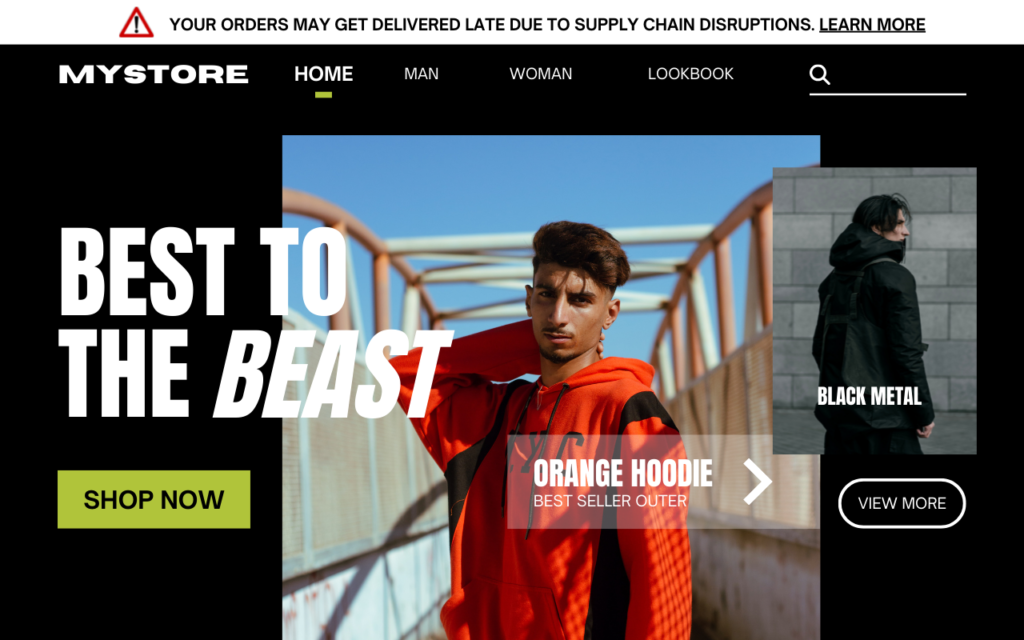
Order shipped (tracking activated).
The first scan is your moment to anchor confidence. Send a clean confirmation with a live tracking link, a clear ETA by day/date, and a quick glance at items and delivery address so customers can spot issues early. Keep the path to “manage delivery options” one tap away to prevent avoidable tickets.

Out for delivery (day-of).
Morning-of delivery messages prevent missed attempts and porch anxiety. Give today’s window and make it effortless to add instructions, redirect to a pickup point, or confirm someone will be available. A nudge here saves failed attempts, re-routes, and the frustration that follows.
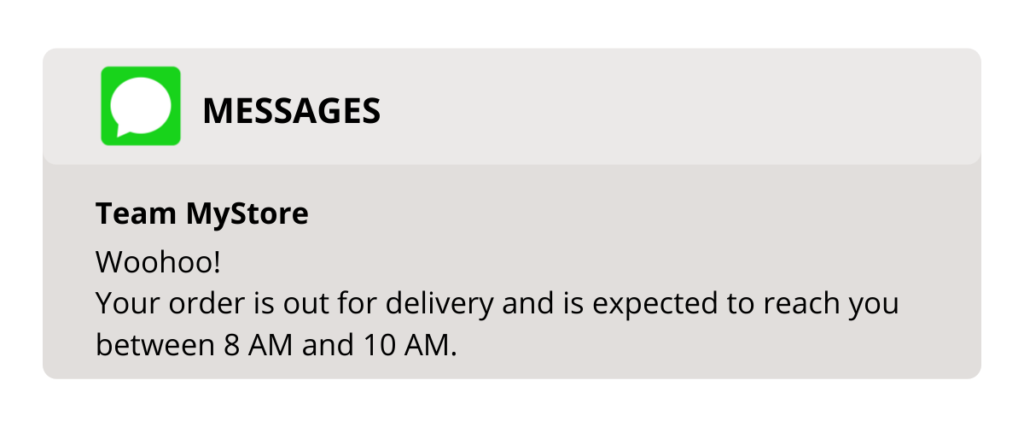
Delivered (instant on scan).
Close the loop the moment the carrier marks it delivered. Confirm where it was left, include a photo/GPS when available, and surface a single “Can’t find it?” action so issues are raised immediately. This is also a subtle chance to thank the customer and invite gentle feedback.
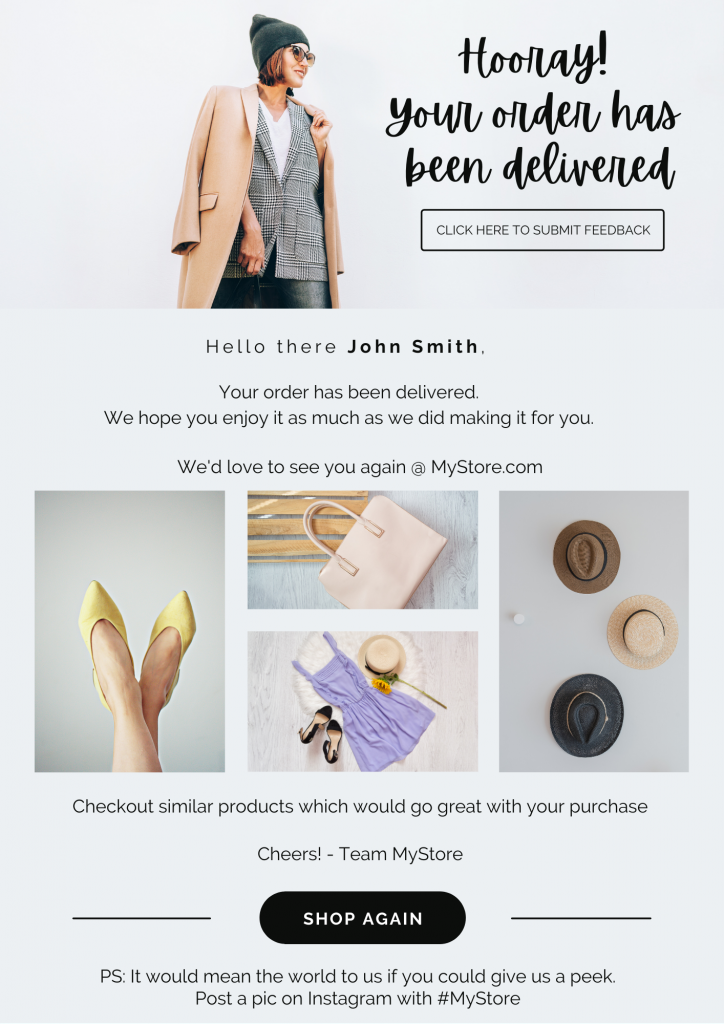
Predicted delay (proactive heads-up).
When your system sees variance building, reach out first. Explain in plain language what changed, share the new ETA, and promise the next update time. Being first to the news turns potential frustration into reassurance and keeps “Where is my order?” messages from spiking.
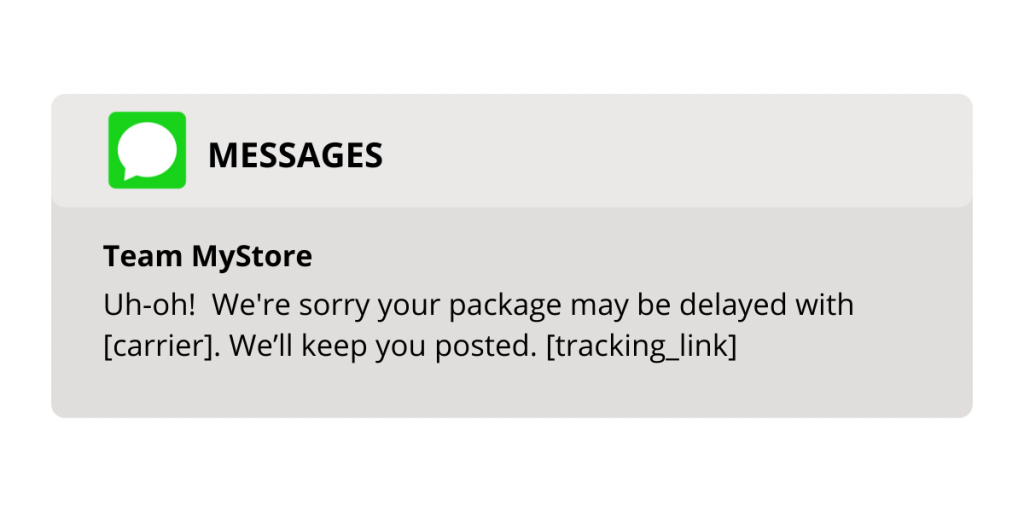
In-transit with delays (confirmed slippage).
If the delay persists, acknowledge it directly and offer choices. Let customers decide whether to keep the shipment moving, switch to a pickup location, or opt for a replacement when timing matters. Ownership plus options keeps sentiment positive even when timelines slip.
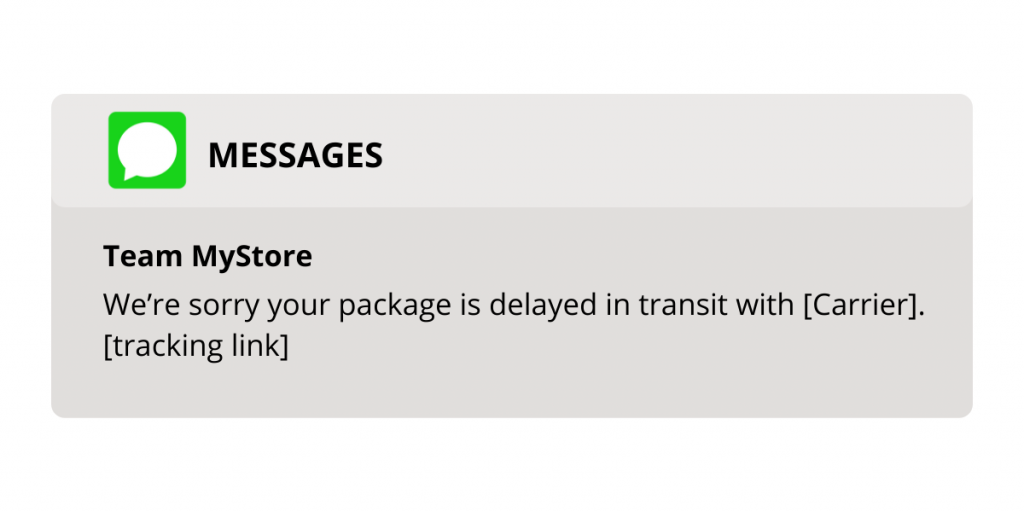
Delivered—but late.
When a gift lands after the planned date, say so plainly and make it right. A brief apology, a one-line reason, and a small make-good (credit, upgrade on the next order) shows respect for their time. Customers forgive delays they’re told about and compensated for far more than silence.
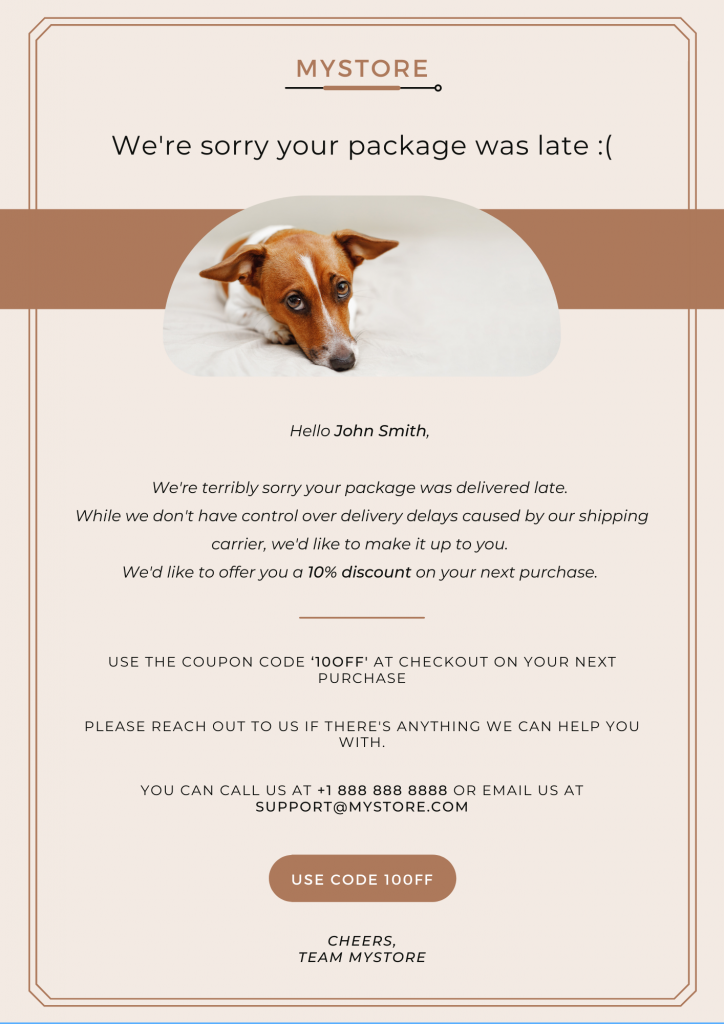
Failed delivery attempt (same day).
Turn a miss into a win by sending an immediate follow-up that explains what happened and how to fix it. Offer an instant reschedule, a pickup-point redirect, or quick address correction. Speed here saves second-attempt fees, returns to sender, and frazzled support threads.
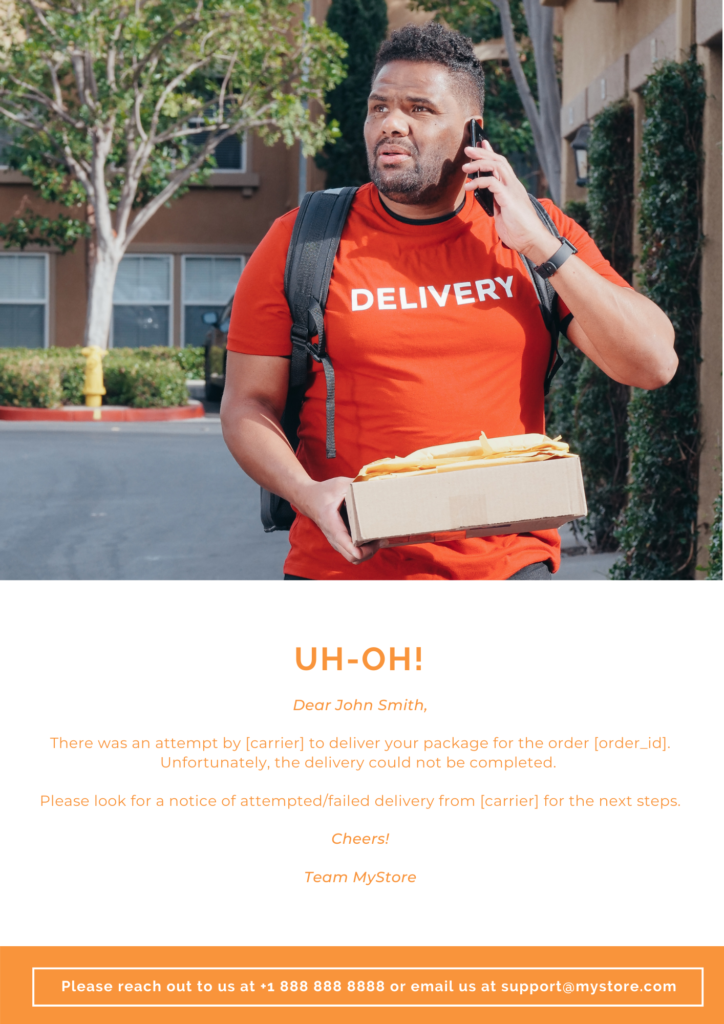
Suspected lost (stalled between scans).
If a parcel looks stuck, lower anxiety by explaining the last scan, what you’re doing to trace it, and when you’ll update next. Set a short investigation window and pre-commit to the outcome reship or refund so the customer knows you won’t leave them hanging.
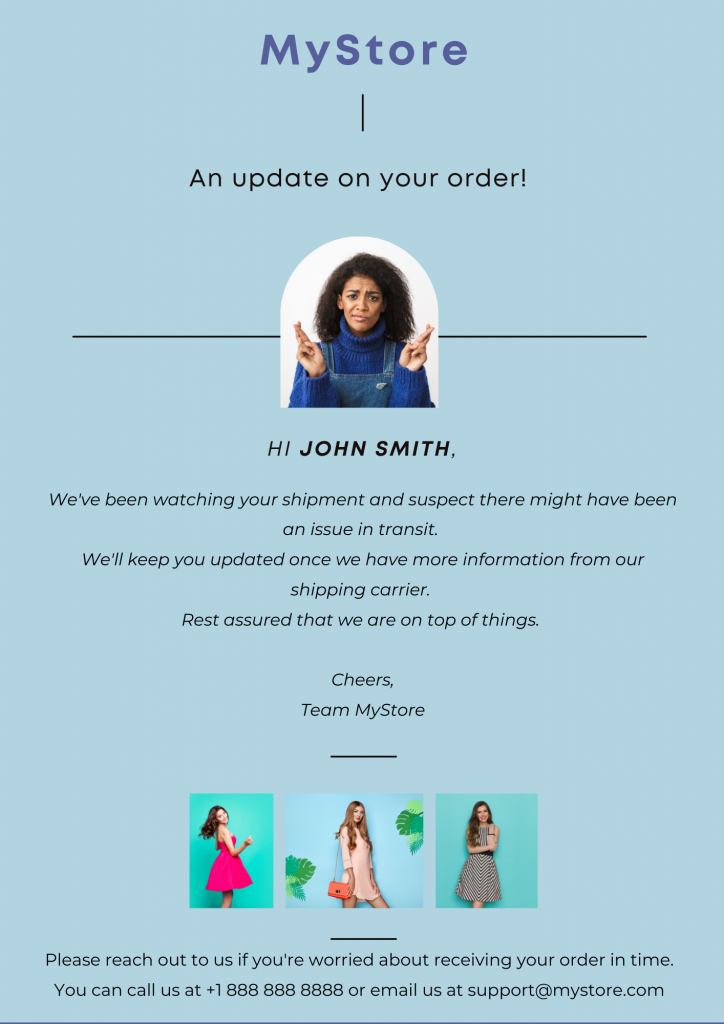
Lost or damaged in transit (confirmed).
When the worst happens, resolve it decisively. Apologize, process the replacement or refund immediately, and keep any evidence collection simple for the customer. Don’t make them wait on carrier paperwork; your speed here defines how they remember the brand.
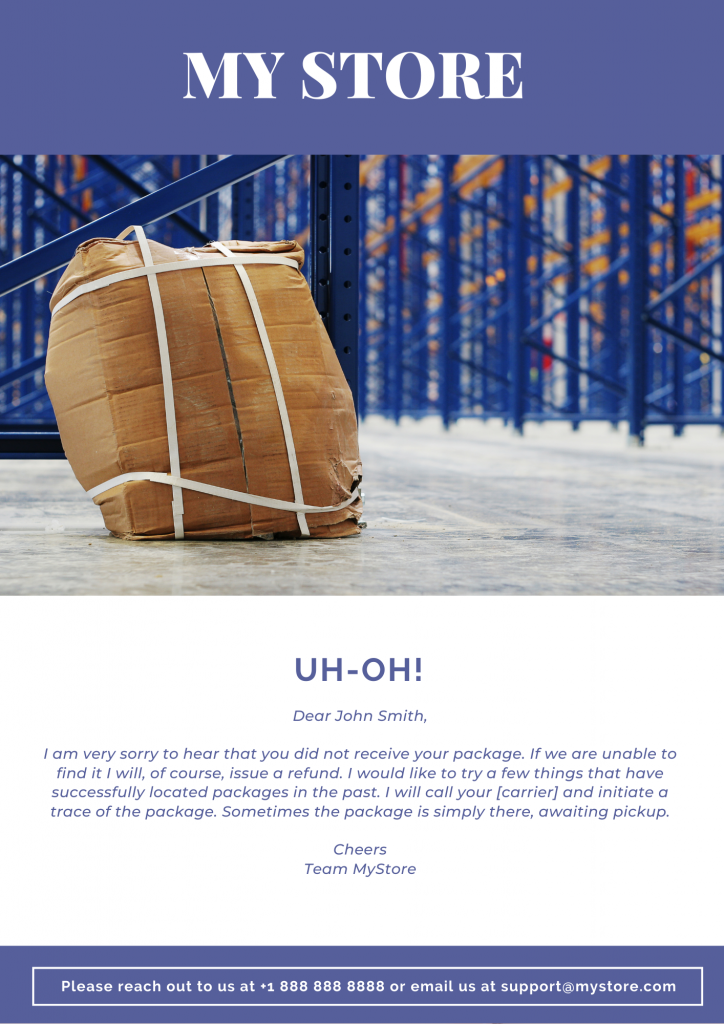
11. Rerouting Solutions: Your holiday order is returned
Returned to sender.
If the carrier marks the order as returned, re-engage to save the sale. Explain why it bounced back and offer a clean fork: correct the address and reship, or take a refund. Remove friction by waiving minor fees where it makes sense—getting the gift back on track matters more than a small charge.

What KPIs show your holiday notifications are working?
- WISMO reduction
Track “Where is my order?” tickets per 1,000 orders. A steady decline means your notifications are answering questions before customers need to ask.
If the rate creeps up, revisit timing—especially proactive delay alerts—and check that tracking links open quickly and reliably. - Open rate and click-through rate (by notification type)
Healthy opens and clicks indicate clear subjects and a single, compelling action. Out-for-delivery and delay notices should lead.
If opens lag, sharpen the subject line with status + date (e.g., “Delayed: New ETA Tue, Dec 9”). If clicks are weak, simplify the layout so the primary action is unmissable. - Delivery attempts saved (NDR → successful redelivery)
Measure the share of failed attempts that convert to a successful delivery after your message. Higher conversion shows your OTD/NDR flows are preventing churn and fee-heavy repeats.
If this underperforms, push reschedule and pickup-locker options higher in the message and add SMS for time-sensitive windows. - Delay acknowledgment rate
Look at the percentage of customers who view a delay notice within six hours. Strong acknowledgment tells you they heard from you before they reached support.
If it’s low, back up email with SMS and put the revised ETA in the first line to make the change instantly clear. - Time-to-resolution for exceptions
Monitor the median hours from exception fired to issue resolved—address fixed, reship initiated, or other closure. Shorter cycles reflect tight playbooks.
If resolution drags, pre-approve make-good rules, streamline evidence requirements, and offer one-click address edits to remove friction. - Repeat purchase after delivery
Compare 30/60/90-day repurchase among customers who received timely, clean notifications to a matched control. A lift signals that transparency has built trust beyond the initial order.
If results are flat, try a light post-delivery follow-up that adds value (fit tips, care guides, accessory suggestions) instead of defaulting to discounts.
Conclusion
Holiday shoppers don’t just want updates they want predictability. A clear, respectful notification plan lowers anxiety, reduces tickets, and saves missed deliveries. Implement the 11-touch flow now: confirm, ship, out-for-delivery, delivered, delay/exception, NDR help, and returns each with a single action and a specific promise for the next update. Pair email for depth with SMS for urgency, collapse noisy events into the highest-value message, and monitor the six KPIs above daily.
Do this, and your brand stays calm and competent while everyone else scrambles and customers remember that long after the last gift is opened.
Frequently Asked Questions
Which notifications drive the biggest WISMO reduction?
Delay/exception and OTD. They answer “what changed?” and “what do I do now?” at the exact moment customers worry most.
How many promos can I include?
One, and only if it’s contextual (e.g., gift wrap on OTD). Utility first, promo second.
What if a package is marked delivered but missing?
Auto-send a “Delivered—can’t find it?” message with photo/GPS (if available), then route to a quick-resolution flow.
How often should I resend notifications?
Only when the milestone changes or a promised update time hits. Avoid repeating the same “in transit” email.
Can I trigger SMS without consent if delivery fails?
No. Use email + in-app/push. For future orders, gather SMS consent at checkout.
Do I localize send times?
Yes—respect local quiet hours and schedule OTD early morning local time.










